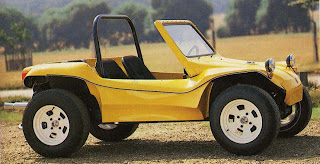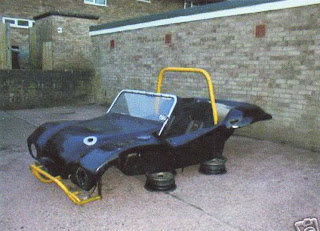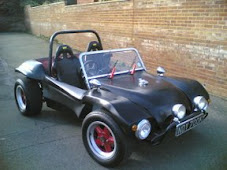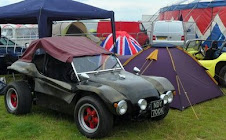 After mounting the turbo onto the car for the first time , the reality of the rest of the components that I needed to obtain started to dawn on me.
After mounting the turbo onto the car for the first time , the reality of the rest of the components that I needed to obtain started to dawn on me.I thought my original budget of £500.00 to add the turbo would have been enough to get my turbo working. Now at this stage having the turbo mounted and the first section of the turbo system made. I could see that I was already over budget at £550.00. I had to make a decision about whether to go forward or to try and fit together what I had. I spent some time working out the cost of buying pressure caps for my IDF carbs and running the turbo through the carbs instead of my original plan to build a custom intake manifold. My Carburetors had been second hand and had come from Texas , so I was unsure of their origin and further more not sure they would be able to take the extra boost pressure from the turbo. My worries where that the throttle rods where not sealed for turbo use and would leak petrol. This was a very serious problem as although the carburetors could be made to work with the turbo the cost of this was looking more than $500.00 . I estimated that to get this stage working that it would cost in the region of another £500.00, although doing this would get me some experience in running the turbo I decided that It was fool hardy to spend this money in a direction that I was going to use as a stop gap to the fully turbo'd injected engine.
I had been looking on eBay at the multitude of different induction kits that there is on the market. It seems that when you buy one of these components you must know the car that it is being fitted onto. This is a bit of a problem , when you are building your own. I soon realized that most of these induction kits where in the region of £80.00 - £150.00. This was not something that my budget could afford at this present time.
Luckily I had been talking to a friend about my dilemma of which direction to take my turbo and he had said that he had seen an induction system sitting on the shelf of my local breakers Yard 'Ripleys'. The following morning I went down to the breakers yard and was happy to find that they had the kit and they only wanted £15.00 for it including the AMF sensor. This was a result as the unit turned out to be Piper X from a Renault Saxo Turbo. I fitted the induction kit to the turbo and realised that I would need some more Samco hose to ensure it did not come off.
I ordered the tube from Demon tweaks and would have to wait till after Christmas to receive it.
I had a telephone call from Demon Tweaks stating there was a problem with my order. Unfortunately I have not been able to find out what this problem is as Christmas 2007 is nearly on top of us.
I want to wish my readers a very merry Christmas and a happy new year 2008.






















